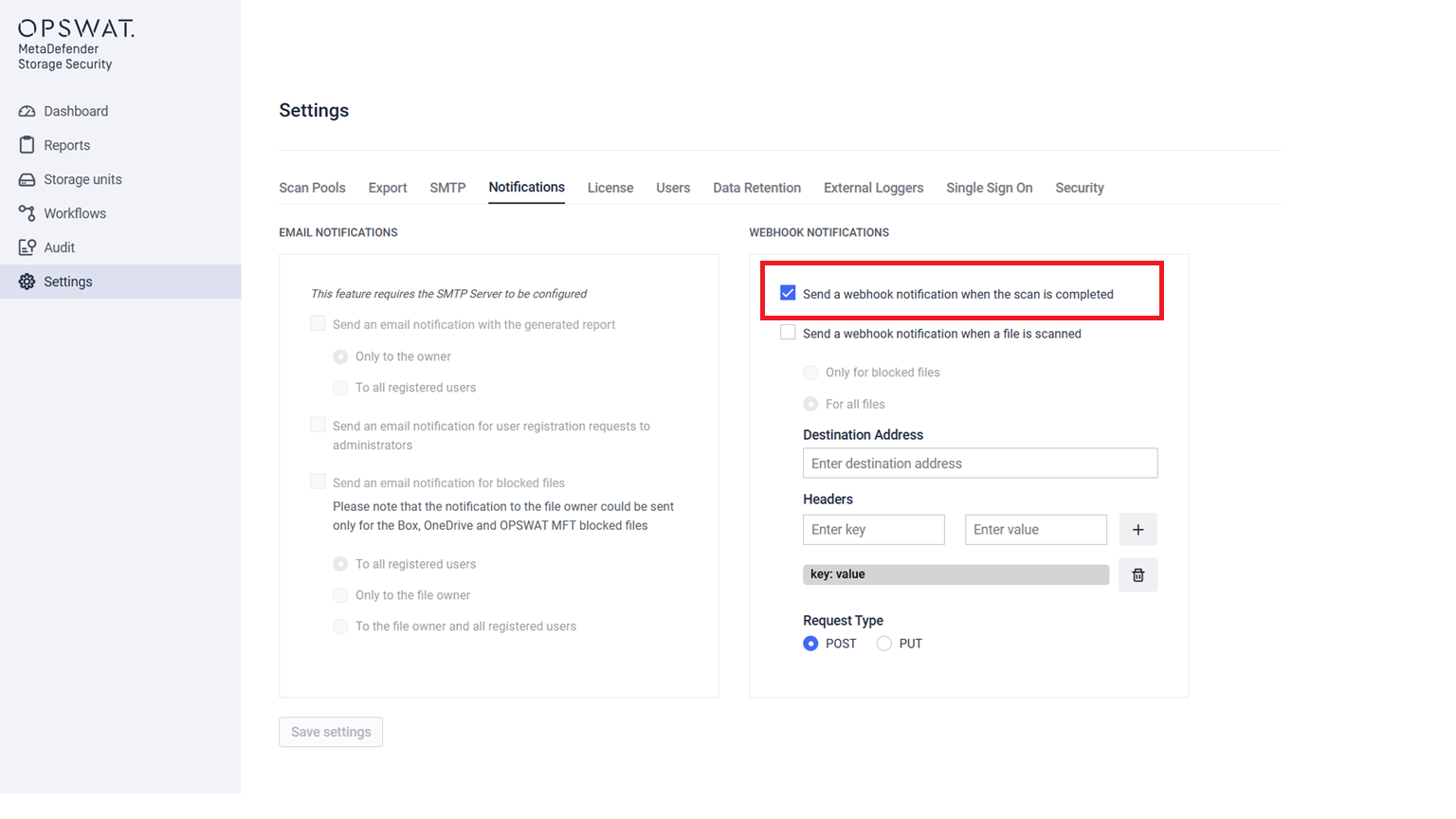Overview
Scan Completed webhook notifications allow you to receive real-time alerts whenever an Instant or Scheduled scan has finished running in MetaDefender Storage Security. This feature is useful if you need to:
- Track the completion status of scans for auditing and compliance.
- Monitor whether scans succeed, fail, or are cancelled.
- Integrate scan lifecycle events into external systems (e.g., scheduling dashboards, reporting tools, SIEM).
- Trigger automated follow-up processes once a scan has completed.
Setup
- Go to Settings > Notifications in the MetaDefender Storage Security console.
- Select Send a webhook notification when a scan is completed under the Webhook Notifications section.
- Enter the Destination Address (your endpoint).
- Select the Request Type (POST or PUT).
- (Optional) Add any custom HTTP headers.
- Save the configuration.

Configuration Details
- Destination address – The URL of the receiving system (must accept HTTP requests).
- Request type – Either
POSTorPUT. - Headers – Optional key-value pairs (e.g.,
Authorization: Bearer <token>).
Webhook Payload
When triggered, the webhook sends a JSON request body to your configured endpoint.
{ "ScanId":"01987f90-870a-7826-9115-18d96a1a4ae0", "ScanName":"second-scan", "StartTime":"2025-08-06T13:27:14.953181Z", "StopTime":"2025-08-06T13:27:20.12684Z", "Status":"Completed", "WebhookNotificationType": "ScanCompleted"}Field Reference
| Field | Type | Example Value | Description |
|---|---|---|---|
ScanId | string(UUID) | 01987f90-870a-7826-9115-18d96a1a4ae0 | Unique identifier of the scan. |
ScanName | string | second-scan | Name of the scan as configured. |
StartTime | datetime (UTC) | 2025-08-06T13:27:14.953181Z | Time the scan started. |
StopTime | datetime (UTC) | 2025-08-06T13:27:20.12684Z | Time the scan finished. |
Status | string | Completed /Cancelled /Failed | Final status of the scan. |
WebhookNotificationType | string | ScanCompleted | Identifies the notification type. |
Delivery Behavior
- Webhooks are delivered as standard HTTP requests.
- Delivery is best-effort → if the destination is invalid, the request is logged in the Audit page, but no retries are performed.
- Payload size is small (JSON only, no scan contents).
Security Considerations
- Configure HTTPS endpoints to ensure data is transmitted securely.
- Use authentication headers (e.g., API tokens) to protect your webhook endpoint.
- Ensure your endpoint validates payloads before processing.
Troubleshooting
- No webhook received → Verify the endpoint URL and request type (POST/PUT).
- Audit shows delivery failed → Endpoint is invalid or unreachable. Fix and test again.
- Authentication errors → Confirm your endpoint accepts the headers you configured.

